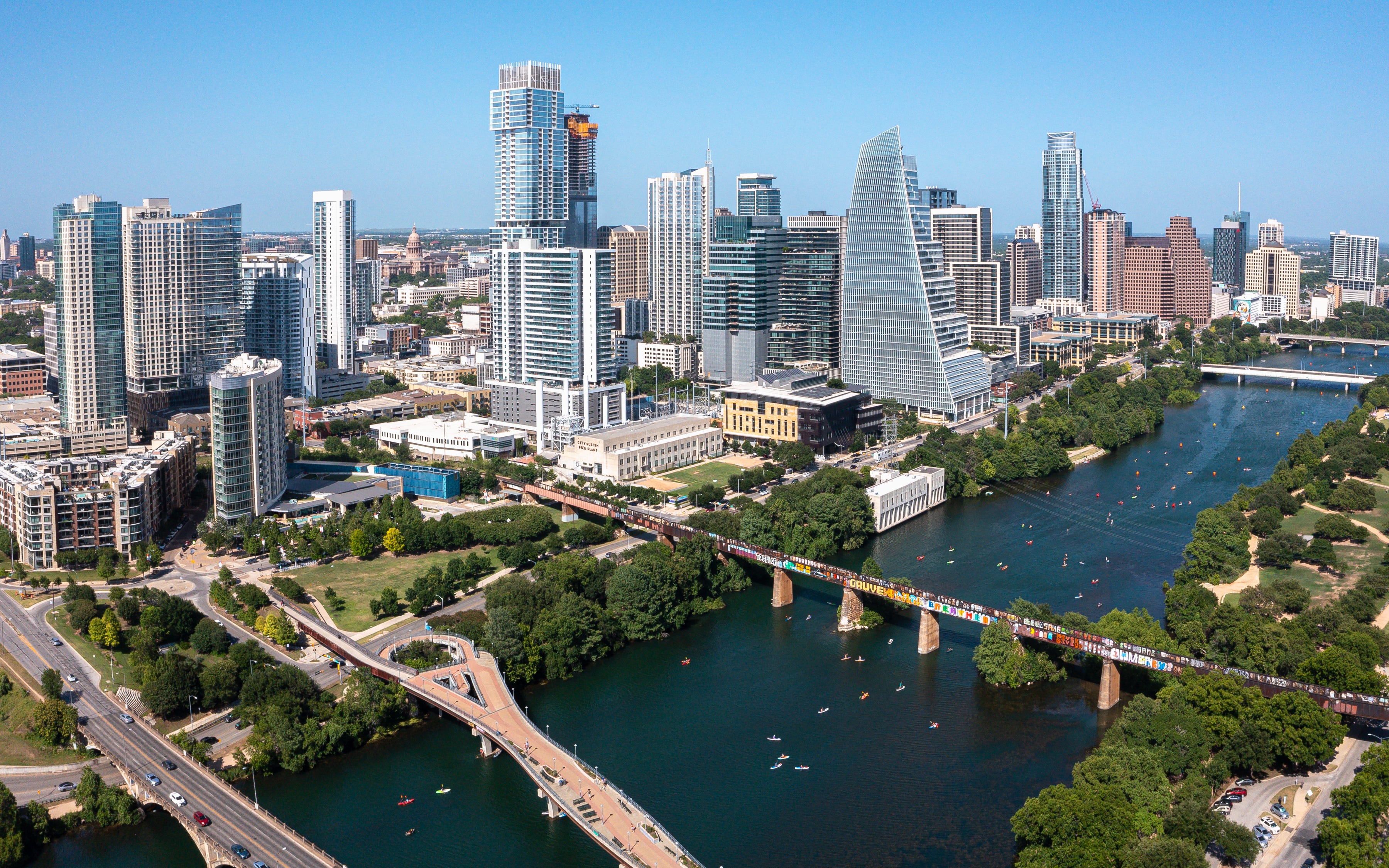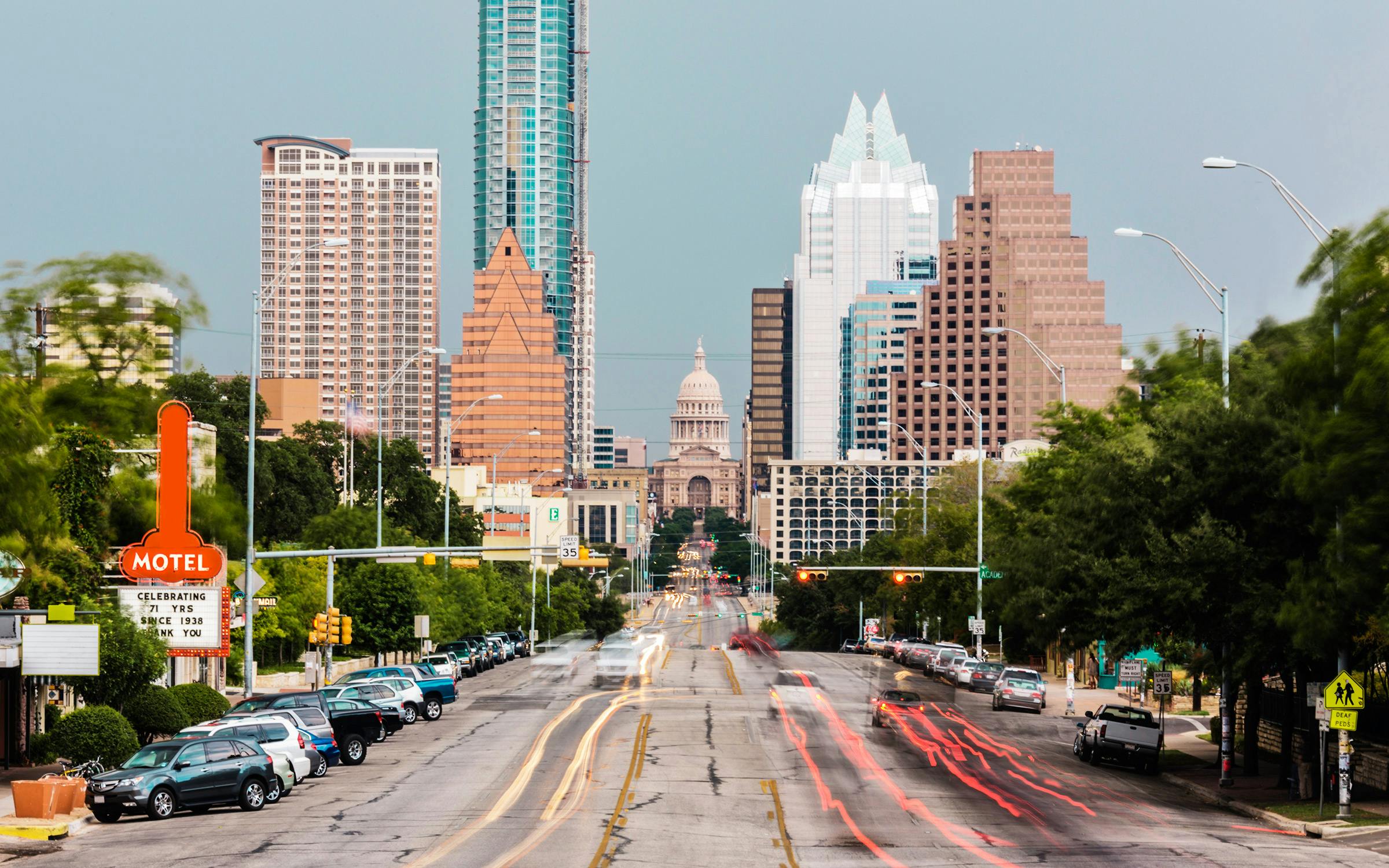Are you thinking of moving to South Austin, Texas, but don’t know where to start? You’ve come to the right place. In this ultimate guide, we will cover everything you need to know about living and working in South Austin, including the best neighborhoods, job market, cost of living, and things to do.
Why South Austin?

South Austin is known for its vibrant culture, outdoor activities, and thriving job market. The area boasts a unique mix of urban amenities and natural beauty, making it an attractive place to live and work.
Best Neighborhoods in South Austin
South Austin is home to several diverse neighborhoods, each with its own unique charm. Here are five of the best neighborhoods to consider:
South Congress

South Congress, or SoCo, is a popular destination for locals and tourists alike. The area is known for its funky boutiques, vintage shops, and eclectic food scene. The neighborhood is also home to several music venues and bars, making it a hub for Austin’s live music scene.
Barton Hills

Barton Hills is a tranquil neighborhood nestled in the hills of South Austin. The area is known for its beautiful parks and outdoor recreation opportunities, including the Barton Creek Greenbelt and Zilker Park. The neighborhood is also home to the Barton Creek Square Mall, which offers a variety of shopping and dining options.
Zilker

Zilker is a family-friendly neighborhood known for its excellent schools and community events. The area is home to Zilker Park, which hosts several festivals and events throughout the year, including the Austin City Limits Music Festival. The neighborhood also offers easy access to downtown Austin and the Lady Bird Lake Hike and Bike Trail.
Bouldin Creek

Bouldin Creek is a trendy neighborhood with a laid-back vibe. The area is known for its hip coffee shops, farm-to-table restaurants, and colorful street art. The neighborhood is also home to several parks and green spaces, including the Bouldin Creek Greenbelt.
Travis Heights
.jpg)
Travis Heights is a historic neighborhood with a bohemian flair. The area is known for its unique architecture, tree-lined streets, and artsy vibe. The neighborhood is also home to several parks, including the popular Stacy Park, which features a swimming pool, playground, and tennis courts.
Cost of Living in South Austin
The Austin-Round Rock metro area has a population of around two million people. The city is renowned for its live music, free-thinking, and open-mindedness, which give it a distinct culture and vibe compared to the mostly conservative and traditional state of Texas. According to WalletHub, Austin ranked eighth among large U.S. cities, topping all other major Texas cities as well as San Jose, Atlanta, and Portland. Austin also ranked a respectable 36th among all 300 cities for the best real estate markets.
One of the main factors driving the Austin real estate market is the intangible but well-documented quality of life that the city offers. In 2017, US News and World Report ranked Austin first for quality of life. In 2016, Austin topped Forbes’ list of Cities of the Future. That same year, the South River City neighborhood was named one of the best places for Millennials by Forbes. WalletHub ranked Austin sixth in its list of best places to live in 2017. In 2012, the FBI ranked Austin as one of the safest cities in the country.
Although housing prices in Austin are high, the cost of living is relatively affordable. Overall, the cost of living in Austin is very reasonable, with a cost of living that is three percent below the national average. Housing costs in Austin are 15 percent below the national average. According to Sperling’s Best Places, grocery costs in Austin are about 11 percent lower than the national average.
The sales tax rate in Austin is 8.25 percent, and there are no income taxes in Texas. Schools are largely funded through property taxes, which rise along with home prices. As home prices continue to rise, many people are forced to move to the distant suburbs to find affordable housing. The CodeNext, a massive reworking of Austin’s building codes, promised to provide some relief.
The median salary in Austin is $51,596, making it the 108th most expensive city in a database of 232 cities by NerdWallet.com. The median rent for a two-bedroom apartment is $1,184, while the median price for a three-bedroom, two-bathroom house is $276,634. Food and entertainment costs in Austin are reasonable, and the area with the lowest cost of living is Redwood Austin.
| Category | Data |
|---|---|
| Population | About 2 million |
| Median home price | $550,000 (19.6% YoY increase) |
| Cost of living | 3% below national average, 15% below national average for housing |
| Quality of life | US News and World Report ranked #1 in 2017 |
| Safety | Ranked as one of the safest cities in the US by the FBI in 2012 |
| Income taxes | No state income taxes in Texas |
| Sales tax rate | 8.25% |
| Median salary | $51,596 |
| Median rent | $1,184 for a 2-bedroom apartment |
| Median home price | $276,634 for a 3-bedroom, 2-bathroom house |
| Grocery costs | About 11% lower than the national average for groceries according to Sperling’s Best Places |
| Best places to live rankings | Ranked 6th by WalletHub in 2017 among best places to live in the US, 36th among all 300 cities for best real estate markets |
| CodeNext | A massive reworking of Austin’s building codes that aims to provide relief from rising home prices and forced migration to distant suburbs |
Housing
As of March 2023, the median listing price for homes in South Austin was $599,000, representing a year-over-year decrease of -1.4%. The median price per square foot for listed homes in the area was $417.
Transportation
South Austin is a car-centric city, and most residents rely on their vehicles to get around. However, the area does offer some public transportation options, including bus routes operated by Capital Metro. A monthly bus pass costs $41 for adults and $20 for students and seniors.
Utilities
The cost of utilities in South Austin varies depending on usage, but you can generally expect to pay around $150 per month for electricity, water, and gas.
Food
South Austin is known for its excellent food scene, with plenty of options for every taste and budget. You can expect to pay around $15 for a meal at a mid-range restaurant, and around $50 per week for groceries.
Job Market in South Austin
South Austin is home to several major employers and industries, making it a hub for job opportunities. Here are some of the top employers and industries in the area:
Top Employers
- St. David’s South Austin Medical Center
- Advanced Micro Devices (AMD)
- SolarWinds
- Cirrus Logic
- NXP Semiconductors
Major Industries
- Technology
- Healthcare
- Education
- Government
- Retail
Average Salary in South Austin
The average salary in South Austin varies depending on the industry and occupation, but the median household income in the area is around $75,000 per year.
Things to Do in South Austin
South Austin offers plenty of opportunities for outdoor activities, live music, and food and drink. Here are some of the top things to do in the area:
Outdoor Activities
- Hiking and biking in the Barton Creek Greenbelt
- Swimming and kayaking in Lady Bird Lake
- Playing disc golf at Zilker Park
- Visiting the Austin Nature and Science Center
Live Music Scene
- Catching a show at the famous Continental Club
- Seeing local bands at the Saxon Pub
- Enjoying a concert at the Austin360 Amphitheater
Food and Drink
- Trying the famous breakfast tacos at Torchy’s Tacos
- Sampling craft beer at the Jester King Brewery
- Dining at Franklin Barbecue, known for its mouth-watering brisket
Schools in South Austin
South Austin is home to several excellent schools, from elementary to higher education. Here are some of the top schools in the area:
Elementary Schools
- Barton Hills Elementary
- Zilker Elementary
- Dawson Elementary
- Kiker Elementary
Middle Schools
- O. Henry Middle School
- Small Middle School
- Gorzycki Middle School
High Schools
- Austin High School
- Bowie High School
- Travis High School
Higher Education
- St. Edward’s University
- Austin Community College
Healthcare in South Austin
South Austin offers several top-notch healthcare facilities, including St. David’s South Austin Medical Center and Seton Southwest Hospital. The area is also home to several specialty clinics and urgent care centers.
Public Transportation in South Austin
While South Austin is primarily a car-centric city, there are several public transportation options available, including bus routes operated by Capital Metro. Additionally, ride-sharing services like Uber and Lyft are widely available in the area.
Conclusion
South Austin is a vibrant and affordable place to live and work, with plenty of opportunities for outdoor activities, live music, and great food. Whether you’re looking to buy a home or rent an apartment, South Austin offers something for everyone.
What is the cost of living like in South Austin?
The cost of living in South Austin is generally considered to be affordable, with a median home price of around $400,000 and a median rent of around $1,500 per month. The cost of utilities and food is also relatively low compared to other major cities. The median household income is $75,000.
What are the best neighborhoods to live in South Austin?
Some of the most popular neighborhoods in South Austin include Barton Hills, Zilker, Travis Heights, and Bouldin Creek. These areas offer a mix of affordability, walkability, and proximity to amenities.
What is the job market like in South Austin?
The job market in South Austin is strong, with several major employers in industries like technology, healthcare, and government. The median household income in the area is around $75,000 per year, and there are plenty of job opportunities across various sectors.
What are the top schools in South Austin?
Some of the top schools in South Austin include Barton Hills Elementary, O. Henry Middle School, and Austin High School. Additionally, the area is home to several higher education institutions, including St. Edward’s University and Austin Community College.

